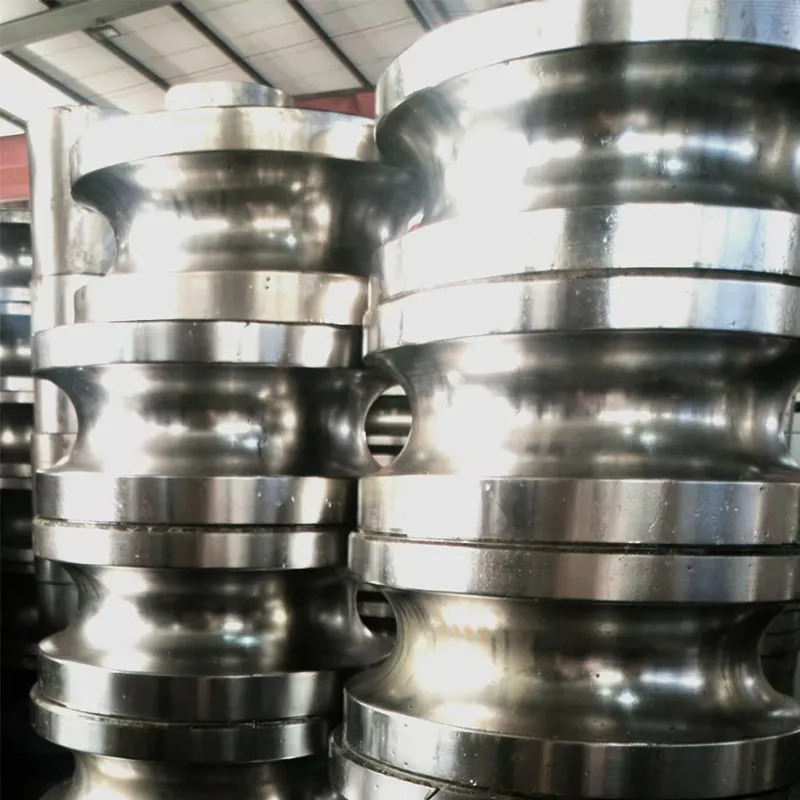cold rolling
Understanding Cold Rolling A Key Process in Metal Production
Cold rolling is a critical industrial process utilized in the fabrication of thin metal sheets and strips, primarily in the steel and aluminum industries. This method involves the deformation of metal at room temperature, leading to improved mechanical properties and enhanced surface finishes. As manufacturers continually strive for higher quality materials and more efficient production methods, cold rolling has become an essential technique in modern metallurgy.
In contrast to hot rolling, which occurs at elevated temperatures, cold rolling takes advantage of the material's ductility at ambient temperatures. This process significantly increases the strength and hardness of the metal through strain hardening, a phenomenon where dislocation density in the metal structure increases due to the applied stress. The result is a product with superior mechanical properties, including improved yield strength and tensile strength, making it ideal for various applications across diverse industries.
One of the primary advantages of cold rolling is the reduction in thickness of the metal. Metal sheets that emerge from cold rolling can achieve extremely precise thickness tolerances, often within a few micrometers. This precision is critical for industries that demand high-performance materials, such as automotive, aerospace, and construction. The thin strips produced are not only lightweight but also exhibit enhanced durability, making them suitable for applications ranging from car body manufacturing to building facades.
Another significant benefit of cold rolling is the improved surface quality it offers
. The process enhances the metal's surface finish, resulting in a smoother, more polished product. This is particularly advantageous for applications where aesthetics are crucial, such as in architectural design or consumer electronics. The smoother surface also facilitates secondary operations, such as painting or coating, leading to better adherence and a more uniform appearance.cold rolling

Additionally, cold rolling can influence the mechanical properties of metals in a way that is beneficial for specific applications. For instance, the process can impart directional properties to the metal, which is essential for structural applications where load-bearing capabilities are critical. The controlled deformation allows engineers to tailor the properties of the metal, ensuring it meets the specific requirements of its intended use.
The cold rolling process begins with the metal being passed through a series of rollers, which progressively reduce its thickness. This can be accomplished using a variety of rolling mill configurations, including tandem mills and cluster mills. Each setup has its advantages, depending on the volume of production and the required specifications of the final product.
As technology continues to evolve, so too does the cold rolling process. Innovations such as computer-controlled rolling mills, automated measuring equipment, and advanced lubrication techniques have significantly improved efficiency and output quality. These advancements not only enhance precision but also minimize waste, contributing to a more sustainable manufacturing process.
Environmental considerations are becoming increasingly important in the metalworking industry. Cold rolling, being an energy-efficient process compared to hot rolling, generates less waste and lowers energy consumption per unit of output. This has made it more appealing in an industry that is striving to reduce its carbon footprint and meet tighter environmental regulations.
In conclusion, cold rolling is a vital process in the modern metal production landscape. Its ability to produce high-strength, precise, and aesthetically appealing metal sheets makes it indispensable across various industries. As technology continues to advance, cold rolling will likely see further enhancements that will improve efficiency, quality, and sustainability in metal manufacturing. By embracing these improvements, the industry can continue to meet the growing demands of an evolving global market.
-
High Frequency Straight Seam Welded Pipe Production Line-BzZhou Xinghua Machinery Equipment Manufacturing Co., LTD.|line pipe steel&welded gas pipeNewsJul.30,2025
-
High Frequency Straight Seam Welded Pipe Production Line-BzZhou Xinghua Machinery Equipment Manufacturing Co., LTD.|High Precision&Automated SolutionsNewsJul.30,2025
-
High Frequency Straight Seam Welded Pipe Production Line - BzZhou Xinghua Machinery Equipment Manufacturing Co., Ltd.NewsJul.30,2025
-
High Frequency Straight Seam Welded Pipe Production Line-BzZhou Xinghua Machinery Equipment Manufacturing Co., LTD.|Precision Welding, High EfficiencyNewsJul.30,2025
-
High Frequency Straight Seam Welded Pipe Production Line|BzZhou Xinghua|Precision Welding&EfficiencyNewsJul.30,2025
-
High Frequency Straight Seam Welded Pipe Production Line - BzZhou Xinghua|Precision Engineering&EfficiencyNewsJul.30,2025


